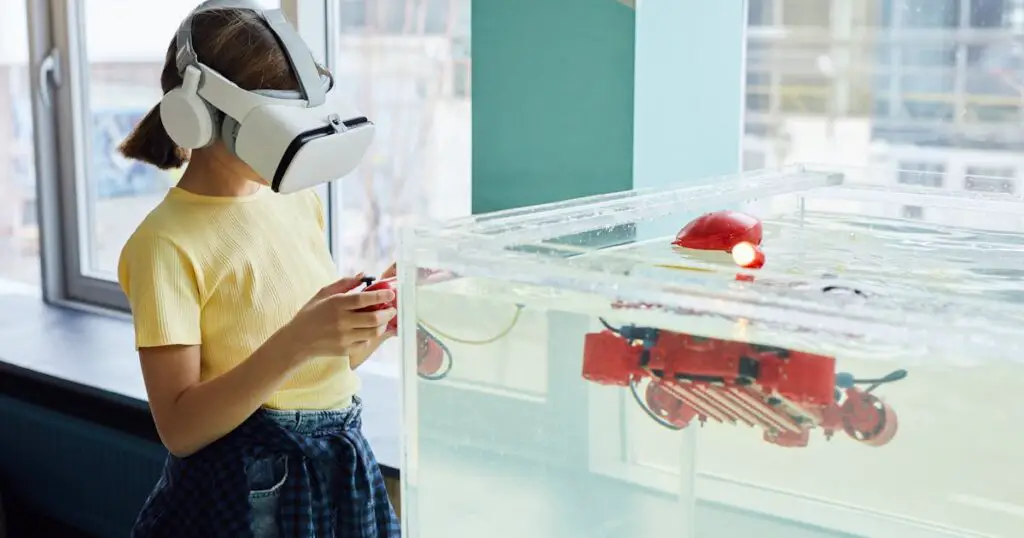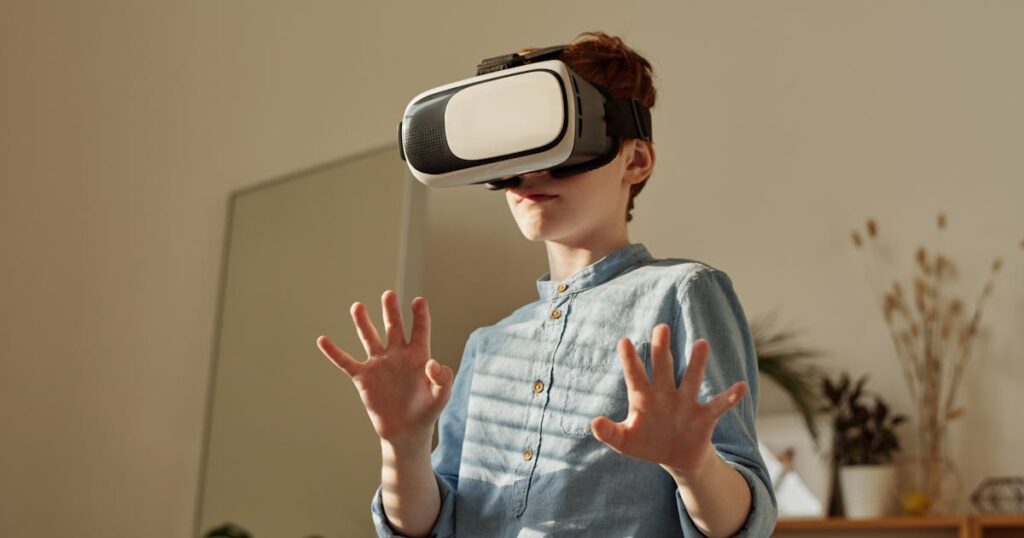Key Takeaway:Exploring virtual reality (VR) reveals its vast benefits. More than a tech marvel, VR can revolutionize education with immersive learning experiences, connect cultures, and enhance understanding in ways traditional methods can't. It can foster empathy with realistic simulations and bring historical sites into the classroom, showing its potential to build a more informed, connected, and compassionate community.
This exploration encourages us, as community members, cultural enthusiasts, and lifelong learners, to envision a future where education is about deep, experiential learning. We are on the brink of an educational revolution, with VR at its core, reshaping how we learn, understand, and interact with the world.

As technology advances at an unprecedented rate, virtual reality (VR) has become one of the most talked-about and intriguing developments. VR has rapidly progressed from just a concept to a tangible experience that is changing how we learn, work, and play. With its immersive capabilities, VR has opened up endless possibilities for industries, from healthcare to entertainment. However, one of the most significant impacts of VR is in education.
In this article, we will explore the benefits of virtual reality in education and how it is revolutionizing how we learn. We will also discuss potential drawbacks and address common questions about VR in education. So, whether you are a resident, cultural enthusiast, or lifestyle and wellness advocate, keep reading to discover the exciting world of VR in education.
AR and VR in Education: Resources and Tips
Virtual reality has become increasingly popular in classrooms around the world. Teachers use this technology as an engaging tool to enhance students’ learning experience. However, with numerous resources and techniques available, it can be overwhelming for educators to determine how to integrate VR into their curriculum effectively.
One valuable resource for educators is the Google Expeditions app, which allows students to explore virtual field trips and immerse themselves in different environments. Another tool is Nearpod, which combines VR elements with traditional lesson plans and interactive activities. With these resources, teachers can create immersive learning experiences that engage students and make complex concepts more accessible.

Besides resources, educators must consider best practices for using VR in the classroom. Firstly, preparing students before jumping into a virtual experience is essential by setting clear learning objectives and guidelines. Secondly, teachers should understand that not all students may react positively to VR, so monitoring their comfort levels and taking breaks is vital. By following these tips, teachers can effectively integrate VR into their lessons and enhance student learning.
Potential Drawbacks of VR in Education
While there are significant benefits to using VR in education, it is essential to acknowledge its potential drawbacks. One of the main concerns is the cost associated with implementing this technology in classrooms. From purchasing equipment to training teachers, incorporating VR can financially burden schools with limited resources. Some experts argue that VR could replace real-life experiences, limiting students’ exposure to the physical world.
Moreover, there are valid concerns about the potential negative effects of spending extended periods in virtual environments, such as eye strain or motion sickness. These factors must be considered when implementing VR in education and addressed through proper student training and guidelines.
The Benefits of VR in the Classroom
Despite its drawbacks, virtual reality offers countless benefits for students and teachers. One of the most significant advantages is its ability to engage students in a more personalized learning experience. By creating immersive environments, students can actively participate and interact with the content, making it easier to understand complex concepts.

VR also allows for unique educational experiences that are impossible in traditional classrooms. For example, students can virtually visit historical sites or experience different cultures without leaving their classroom. This aspect of VR broadens students’ perspectives and promotes cultural awareness and empathy.
Furthermore, VR has improved retention rates among students as it provides a more memorable and engaging learning experience. It also allows for hands-on learning, especially in subjects like science and math, making it easier for students to understand and retain information.
What are Some Potential Uses of VR in Education?
The potential uses of virtual reality in education are vast and continually expanding. VR can enhance learning experiences across various subjects, from science experiments to historical reenactments. In medical schools, students can practice procedures in a realistic virtual environment without the risk of harming patients. In language classes, students can interact with native speakers virtually, improving their conversational skills.
Moreover, VR can also be used for special education to create more inclusive learning environments for students with disabilities. It allows them to experience real-world scenarios and overcome limitations in traditional classrooms.
FAQs
In this section, we will be delving into some of the most common inquiries and curiosities that surround our topic.
Is VR expensive to implement in education?
The cost of implementing VR in education can vary depending on the equipment, training, and resources needed. However, there are affordable options available for schools with limited budgets.
Can VR replace real-life experiences in education?
While VR can offer unique learning experiences, it should not replace real-life experiences entirely. It is essential to find a balance between virtual and real-world learning.
Is VR safe for students?
As with any technology, there are potential risks associated with using VR. However, by following proper guidelines and monitoring student comfort levels it can be a safe and beneficial tool in education.
Conclusion: What are the Benefits of Virtual Reality?
Virtual reality is transforming the way we learn, providing engaging and innovative opportunities for students of all ages. With the right resources, techniques, and guidelines, educators can effectively integrate VR into their curriculum and enhance student learning. As technology continues to advance, we can only imagine the endless possibilities and potential uses of VR in education. So, let’s embrace this exciting tool and unlock its full potential for the benefit of our students’ education.



Leave a Comment
You must be logged in to post a comment.